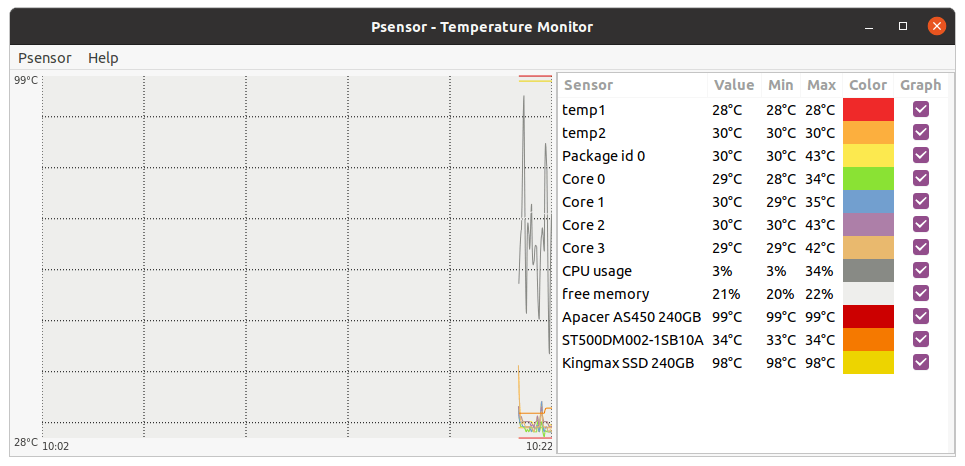

And Arch, Manjaro Linux may install it by running command: sudo pacman -S hardinfo.For Fedora and CentOS, use command: sudo dnf install hardinfo.Ubuntu, Debian, Linux Mint based systems, run command to install hardinfo: sudo apt install hardinfo.Simply install it from the Software App, or by running one of commands below. The software is available in most Linux repositories, including Fedora, Ubuntu, Debian, Arch Linux, and openSUSE. The sensors is enough to monitor if the computer is going overheat, though beginners including me may not know which hardware that the temperature tells for. Hardinfo is great for checking information for system, hardware, networking, and for benchmarking. The popular system information and benchmark tool, Hardinfo, has “sensors” in the left panel under ‘Devices’ that monitors the hardware temperature. However, when you need running a large project such as video processing, it’s always good if there’s an app indicates the CPU and/or GPU temperature. Users may use a power saving utility, e.g., TLC or slimbook battery, to cool down computer and save battery life. UPDATE: 4.21 just became 5.0 with the 5.To prevent computer or laptop from overheating, here are quite a few tools to keep an eye on hardware temperature. If you need per core temperatures and/or better support for AMD Zen 2 CPUs, they will be available in 4.21 kernel release – hopefully by the end of Q1'2019. Here is what it87 is capable right now – in this example on AMD Ryzen 5 2600: $ sensors As of Linux kernel version 4.15 (which is the default for Ubuntu 18.04.1), both it87 and nct6775 modules are included in the release.


 0 kommentar(er)
0 kommentar(er)
